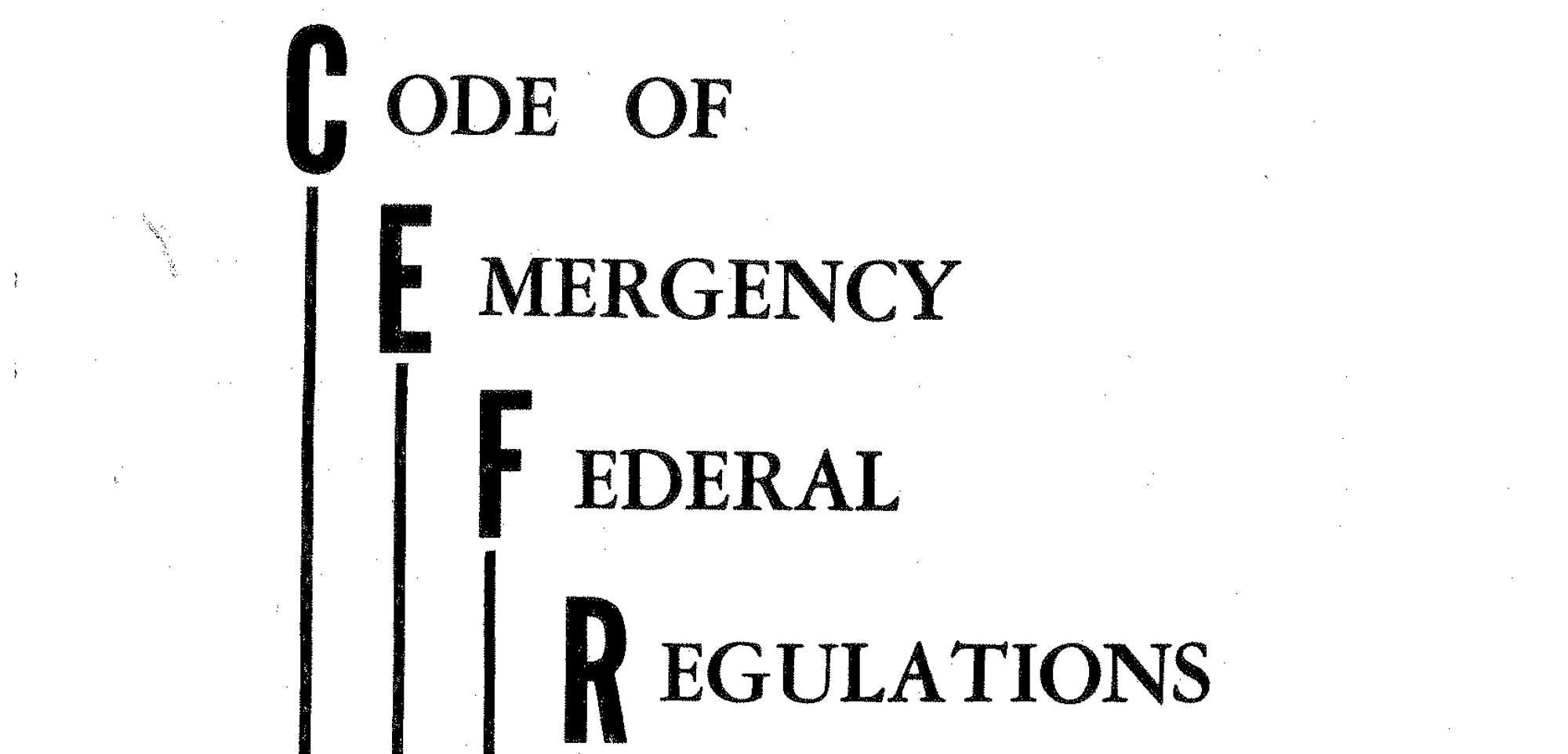Presenting a bit of history: the Code of Emergency Federal Regulations

Each year, the workings of the American regulatory system are chronicled in print. A series of volumes, titled the Code of Federal Regulations (CFR), lay out the current state of all the regulations promulgated by the Federal government’s executive branch. Within them can be found the rules that govern every sector of society that is touched by Federal regulation — from taxation to tobacco, highways to housing, parks to pensions to postal delivery.
All of which is well known. What is less well known, however, is that for nearly three decades the government maintained a second, secret set of regulations — regulations that were only to go into effect if the United States were struck by a devastating nuclear attack.
Titled the Code of Emergency Federal Regulations (or CEFR for short), this set of rules was never published in handsome hard-bound volumes for distribution to law schools and libraries the way the CFR is. It was instead distributed in loose-leaf notebooks, copies of which were distributed only to the agencies that their contents affected. And in the bowels of those agencies it moldered away, periodically updated but mostly forgotten as the apocalypse it was designed to regulate never arrived.
With the end of the Cold War, the rationale for the existence of the CEFR disappeared, and it has spent the time since making small steps out into the light. Its existence was declassified in the 1990s, and copies have been made available to researchers via some legal databases and expensive publications. But to the best of my knowledge, no copy of the CEFR has ever been made available free of charge to the general public.
Until now.
With the invaluable assistance of the National Archives, I am pleased to offer a complete electronic download of the original 1965 edition of the Code of Emergency Federal Regulations, along with the 14 updates it received during its lifetime, in PDF format:
To simplify downloading, the documents are bundled together into a compressed ZIP archive. The change documents contain only those pages that modify the CEFR as it existed when they were issued, so to generate a complete copy of the “final” CEFR, you would start with the original document and then apply each set of changes in order.
This is not the final official release these documents will see; the team at the Archives are working on them further, with an eye towards improving their accessibility and eventual publication in their Electronic Reading Room. There they will be available to the public alongside many other important documents from American history. What I’m providing here is more modest: just a raw set of scanned pages derived from an original printed copy of the CEFR. But, since even that could be of interest to students of American history and Cold War ephemera, I felt that it was worth releasing this limited version in the meantime.
I’m going through the contents of the CEFR and its various updates now, with an eye towards pulling out the most interesting bits. There’s a lot to say on that front, so these will follow in a separate post.
UPDATE (Nov. 3, 2016): Here’s that separate post I promised on the details of the CEFR.
